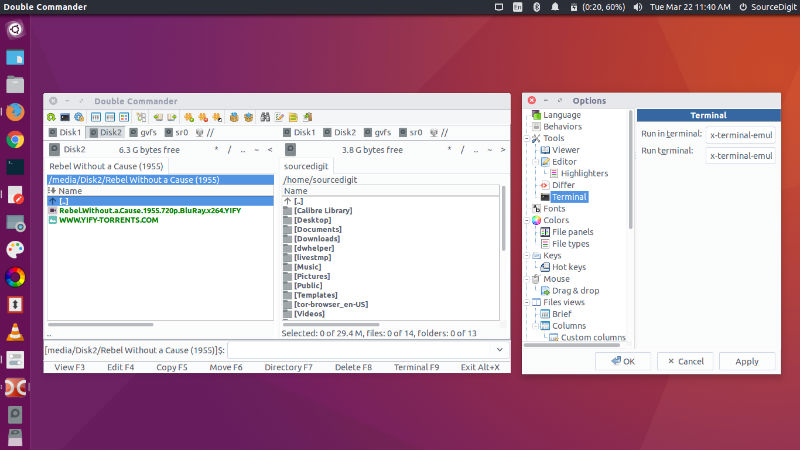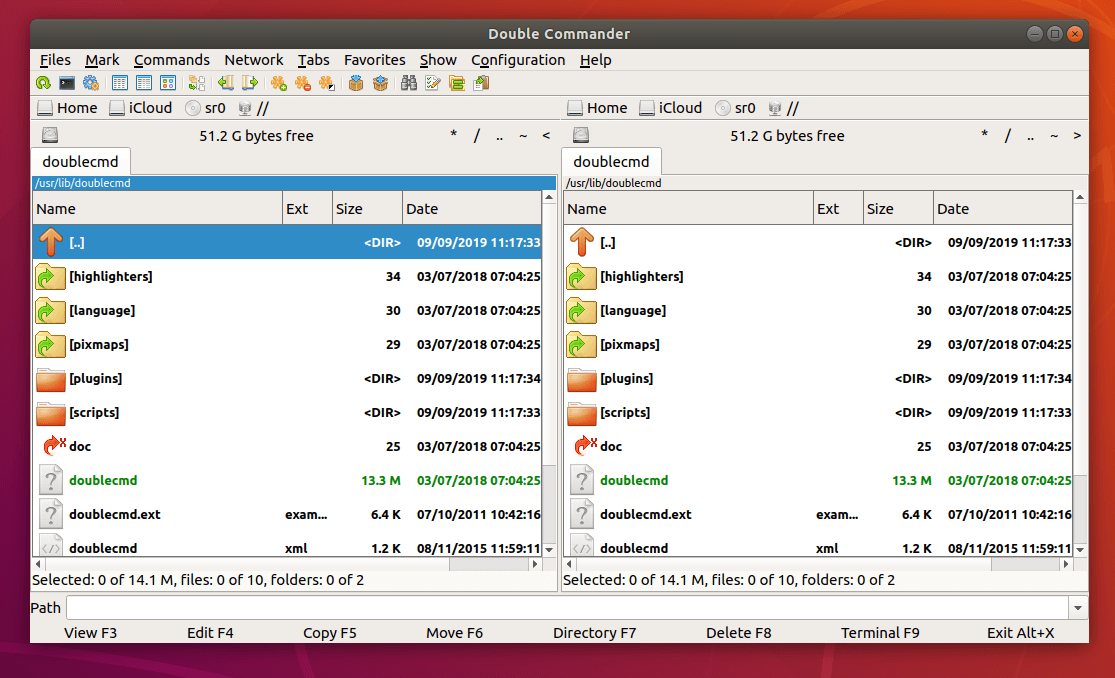

- #Double commander for linux pictures how to#
- #Double commander for linux pictures manual#
- #Double commander for linux pictures software#
- #Double commander for linux pictures Pc#
- #Double commander for linux pictures series#
A good note before we go further would be that these commands you are about to see change the keyboard layout settings permanently, as in they survive between reboots. One can configure many facets of the systems using it. What follows is the Debian/Ubuntu way.ĭpkg-reconfigure is a tool that every Debian admin uses and loves. This is a distro-agnostic, X-centric way to set up your keyboard locale. ) So if you need non-PC layouts, eliminate ‘i386’ from the ls command above.
#Double commander for linux pictures Pc#
For example, Macs or Sun boxes have keys a PC doesn’t, and the keys are laid out differently. The layout->variant has to do with certain hardware. The language->layout relationship is a social/hystorical/political one (going further with the French language, France once had lots of colonies that in the end inherited the language, with certain specific aspects. One language doesn’t mean one layout, and one layout doesn’t by any means mean one variant. Another important flag to setxkbmap is -variant, because many layouts have different variants, “different” being the keyword. YOUR_ARCH is your architecture, which usually will be i386, although the system is a 64-bit machine/OS combo. The rule of thumb is that whatever name comes before the kmap.gz suffix is the name of the layout to use with setxkbmap, ignoring the include directory which is of no interest to us. Just take advantage of the power of ls and your shell, by doing $ ls /usr/share/keymaps/YOUR_ARCH/* Now, a logical question would be “how do I know the names of every layout I might wanna use?” Very simple.

The layout name is ‘us’, by the way, but that is hardly the point. I dare you to execute this command, even though you don’t need a French layout, and then try to get back to the US layout. If I have the US English layout set as default, which happens in most cases, and I want to change it to French, all I have to do is $ setxkbmap -layout fr That’s the charm of Linux, there are virtually no limits on what you can do with it.Įnough talk, let’s see some practical examples. I remember using shell scripts that contained only the setxkbmap lines needed and then setting up keyboard shortcuts that invoked said scripts as needed (~/.fluxbox/keys): maybe this is a trick you will use after reading this article so that your work will become easier. As you can imply, the utility’s name stands for “set X keyboard map”.
#Double commander for linux pictures manual#
As always, I recommend you take a few minutes to look over the setxkbmap manual page to get an idea of the options and general usage flags. The first method shown will be the one that assumes that you have X.org installed and you’re using it in conjunction with some WM, but you don’t have any specific GUI tools for layout changes.
#Double commander for linux pictures how to#
If you don’t you can use various tools provided by your distro (by the way, remember that we are using Ubuntu for our examples), but we will show you how to do it in terminal-only mode without depending on some distro-specific tools. If you do, the utility is called setxkbmap. What you should use for this task strictly depends on whether you have X installed or not. What to do? Or you decided to dump bloated GNOME or KDE for some lightweight window manager like Fluxbox. But what if you find yourself at a command-line-only machine and you have to use the machine, but the layout is set to French? The keys show a symbol but you type another and nothing works as it should. A few clicks, you choose your preferred layout and maybe other localization settings and that’s that. When you’re using some fancy desktop environment, changing the layout of your keyboard is simple and easy. The tasks, part three Setting the keyboard layout
#Double commander for linux pictures series#
We hope that the series will help you become a keyboard/terminal guru. This time we will deal with other interest-worthy tasks, like setting up your keyboard layout or using utilities to find files on your drive(s). So, for complete removal, choose the Complete removal option and click on the Apply button.Here’s another installment of the Linux CLI basics series. Usually, they are located right in your home or in ~/.config. To find these files, unable “Show hidden files” in the view menu of your file manager and search for folders with the program name you want to remove. If you want to completely get rid of all files associated with a program, you need to remove its config files from your home directory manually. Note that this uninstall does not remove the configuration files from your home directory. So, this way you can keep your system clean. The second option, Mark for Complete Removal, in addition to removing the program, will also remove all the configuration files in your /etc directory.

#Double commander for linux pictures software#
Basically, it will do the same what has been done through the Linux Mint menu and through the Software Manager. Mark for Removal will just remove a program. Here, you have two options to uninstall it: Two options to remove a package in Synaptic


 0 kommentar(er)
0 kommentar(er)
